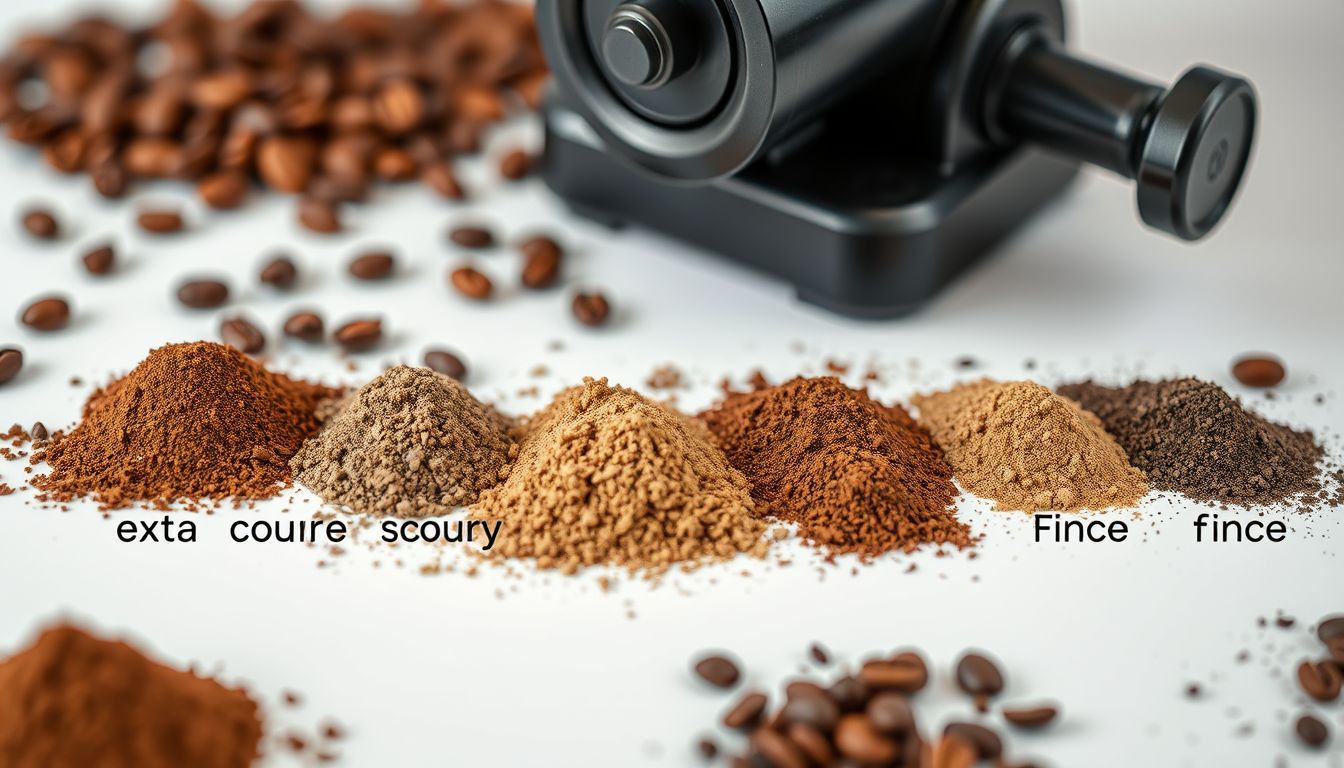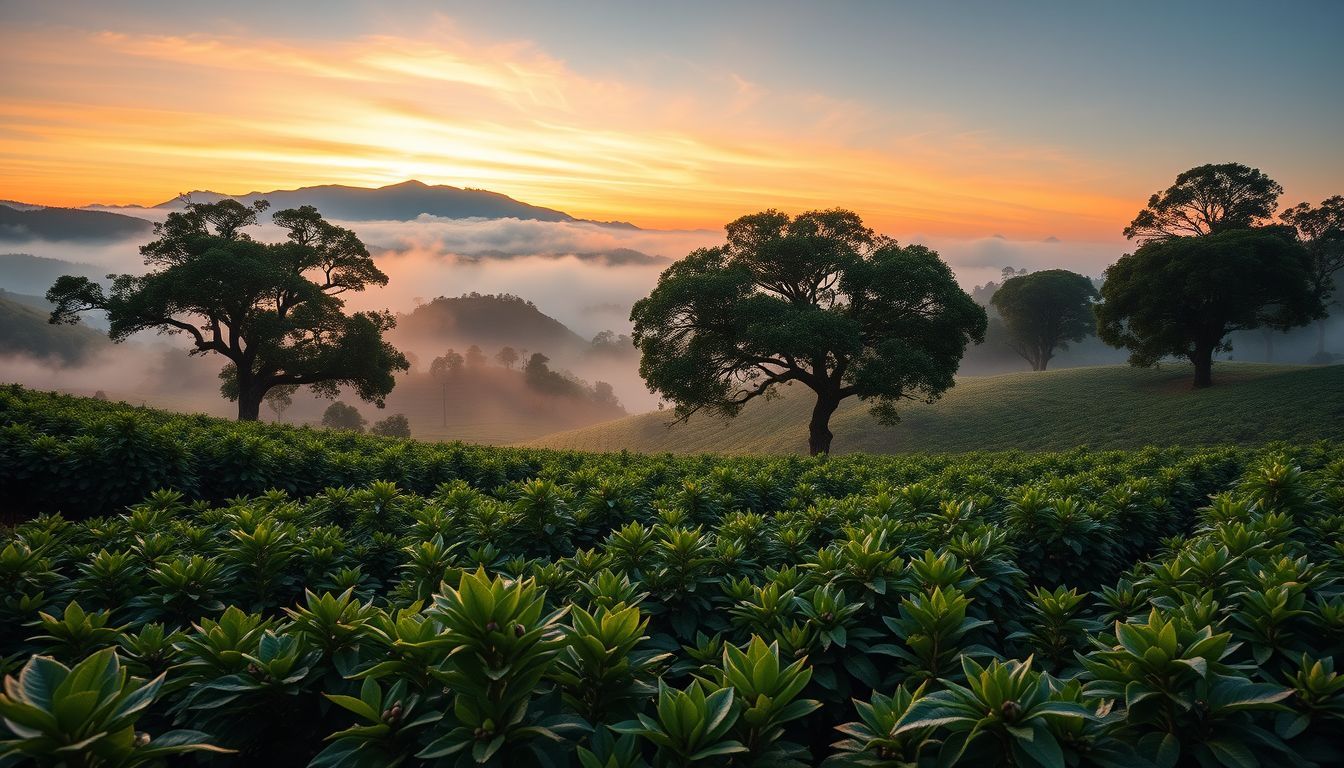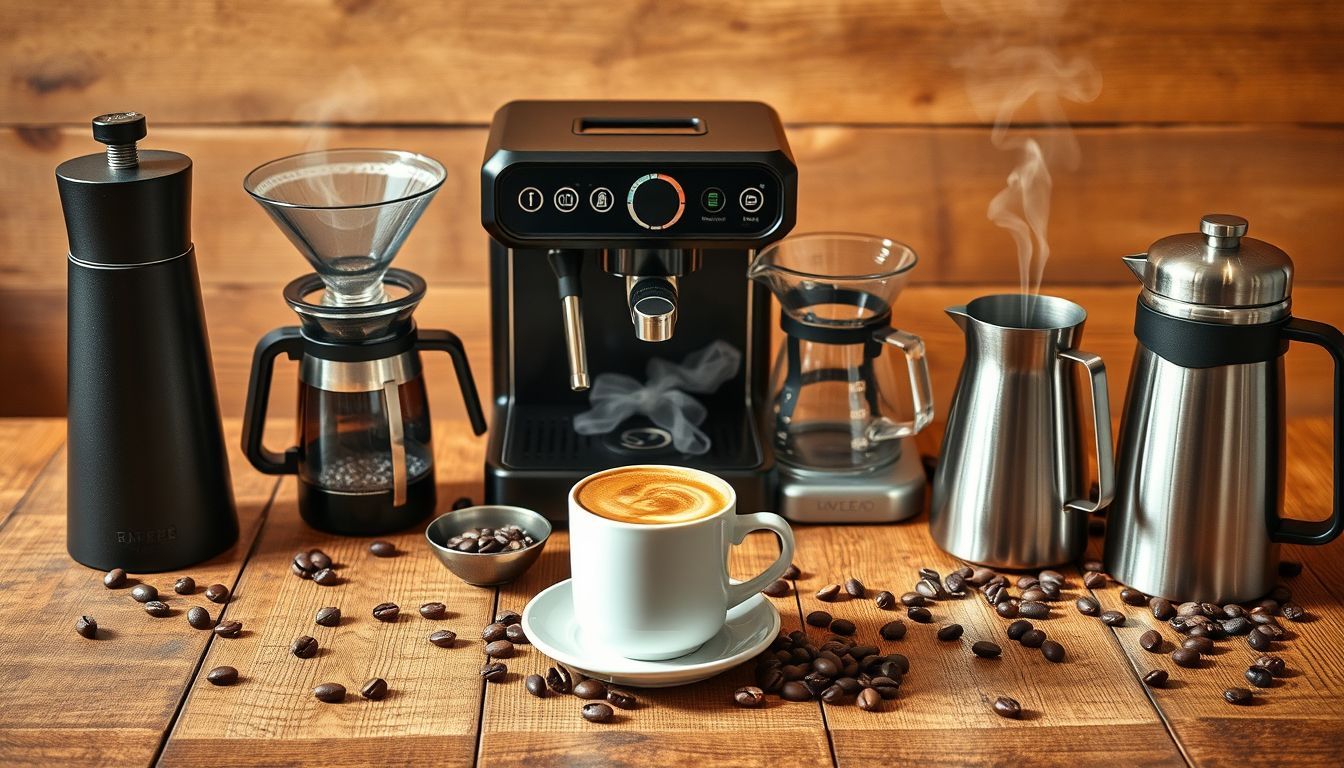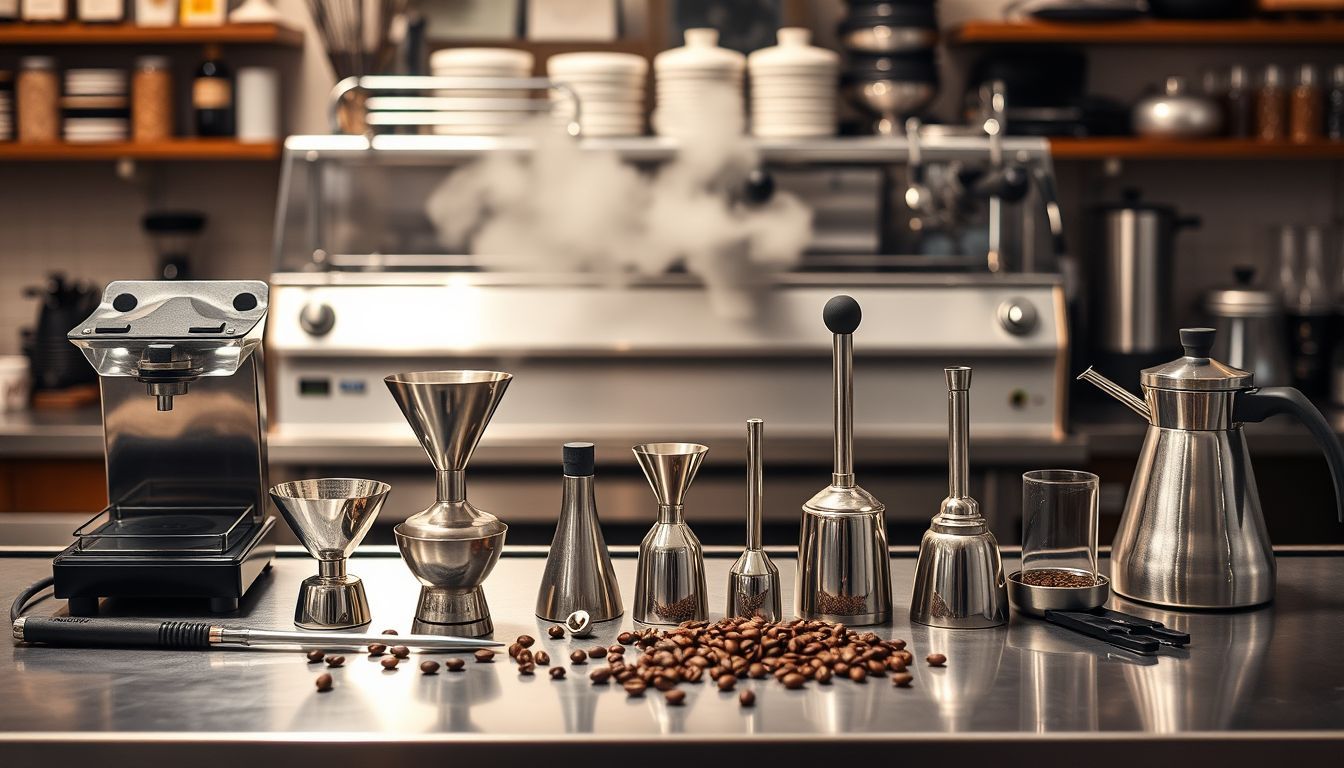Coffee Grind Size Guide: How Particle Size Affects Extraction and Flavor
Master the science behind coffee grinding with this comprehensive guide to particle sizes. Learn how grind affects extraction rates and discover which size works best for your brewing method.

Amazon Affiliate Disclosure
This post contains affiliate links. If you purchase through these links, we may earn a small commission at no additional cost to you.
As a coffee scientist, I've spent countless hours analyzing the microscopic world of coffee particles and their profound impact on extraction. The grind size you choose isn't just a minor detail—it's the fundamental variable that determines whether your coffee will be a masterpiece or a disappointment. Today, we're diving deep into the science of particle size and how mastering this knowledge will transform your brewing game forever.
The relationship between grind size and extraction is one of the most elegant examples of physics meeting flavor in the coffee world. Every adjustment you make to your grinder settings cascades through a complex chain of chemical reactions, ultimately determining what ends up in your cup.
The Science of Extraction: Why Size Matters
Surface Area and Contact Time
Coffee extraction is fundamentally about surface area. When we grind coffee beans, we're creating thousands of tiny particles, each with exposed surfaces where water can interact with the soluble compounds inside. The finer the grind, the more surface area we create, and the faster extraction occurs.
Think of it this way: a whole coffee bean has minimal surface area relative to its volume. But grind that same bean into fine particles, and you've exponentially increased the surface area available for extraction. This is why espresso, with its ultra-fine grind, can extract a full-bodied shot in just 25–30 seconds, while cold brew, using a coarse grind, needs 12–24 hours to achieve proper extraction.
The Extraction Timeline
During brewing, different compounds extract at different rates:
- Acids extract first (bright, tangy flavors)
- Sugars and aromatics follow (sweetness and complexity)
- Bitter compounds extract last (caffeine, tannins)
Grind size directly controls how quickly we move through this extraction timeline. Too fine for your brewing method, and you'll race past the sweet spot into bitter territory. Too coarse, and you'll never reach the full flavor potential locked inside those beans.
The Complete Grind Size Spectrum
Extra Coarse (Sea Salt Texture)
Particle Size: 1.5–2 mm
Best For: Cold brew, cowboy coffee
Extraction Time: 12–24 hours
Extra coarse grinds look almost chunky, resembling coarse sea salt or crushed peppercorns. These large particles have minimal surface area, making them perfect for extended extraction methods. The slow, gentle extraction prevents over-extraction even during long steeping times. For a convenient at-home setup, try the Ninja Hot & Iced XL Coffee Maker, which offers rapid cold brew alongside your morning coffee. Ninja Hot & Iced XL Coffee Maker
Coarse (Kosher Salt Texture)
Particle Size: 1–1.5 mm
Best For: French press, percolator, cupping
Extraction Time: 4–6 minutes
Coarse grinds are the workhorses of immersion brewing. The particles are large enough to be easily filtered by metal mesh while providing sufficient surface area for proper extraction in 4–6 minutes. This is my go-to recommendation for French press enthusiasts. For a reliable press at home, check out the MuellerLiving French Press Coffee Maker. MuellerLiving French Press Coffee Maker
Medium-Coarse (Coarse Sand Texture)
Particle Size: 0.75–1 mm
Best For: Chemex, Clever dripper, siphon
Extraction Time: 4–6 minutes
Slightly finer than coarse, medium-coarse grinds work beautifully with thicker paper filters. They allow for controlled extraction that highlights clarity and brightness.
Medium (Table Salt Texture)
Particle Size: 0.5–0.75 mm
Best For: Drip coffee makers, pour-over (V60, Kalita Wave)
Extraction Time: 2–4 minutes
Medium grind is the Swiss Army knife of coffee grinding. It’s versatile enough for most brewing methods and forgiving enough for beginners. If you’re chasing the perfect V60, the Hario V60 dripper remains a classic. Hario V60 Ceramic Coffee Dripper, Size 02, White
Medium-Fine (Fine Sand Texture)
Particle Size: 0.3–0.5 mm
Best For: Pour-over with faster flow rates, AeroPress
Extraction Time: 1–3 minutes
Medium-fine grinds increase extraction speed while maintaining some forgiveness. They’re perfect for pour-over methods when you want to slow down the flow rate slightly or for AeroPress brewing with shorter steeping times.
Fine (Powdered Sugar Texture)
Particle Size: 0.2–0.3 mm
Best For: Espresso, Moka pot, Turkish coffee (coarser end)
Extraction Time: 25–40 seconds
Fine grinds are where precision becomes critical. These small particles extract quickly and can easily tip into over-extraction territory. Espresso demands this grind size to create the resistance needed for proper pressure extraction. For barista-quality shots at home, consider the Breville Barista Express. Breville Barista Express Espresso Machine BES870XL
Extra Fine (Flour Texture)
Particle Size: <0.2 mm
Best For: Turkish coffee, some espresso machines
Extraction Time: 10–30 seconds
Extra fine grinds are almost powder-like and extract extremely quickly. They’re primarily used for Turkish coffee or for espresso machines that require maximum resistance.
Identifying Extraction Issues
Signs of Under-Extraction
- Sour, acidic taste without balancing sweetness
- Weak body and thin mouthfeel
- Lack of complexity in flavor
- Short extraction time for your brewing method
Solution: Grind finer, increase brew time, or use more coffee.
Signs of Over-Extraction
- Bitter, harsh flavors dominating the cup
- Astringent mouthfeel that dries your palate
- Muddy or unclear flavor profile
- Extended extraction time beyond recommendations
Solution: Grind coarser, decrease brew time, or use less coffee.
The Sweet Spot
Perfect extraction delivers:
- Balanced acidity that brightens without overwhelming
- Natural sweetness that rounds out the flavor
- Complex aromatics that evolve as the coffee cools
- Clean finish without lingering bitterness
Grinder Types and Consistency
Burr Grinders: The Gold Standard
Burr grinders crush beans between two abrasive surfaces, creating uniform particle sizes. They offer:
- Consistent particle distribution
- Adjustable grind settings
- Minimal heat generation
- Longer lifespan
For consistent results, I recommend upgrading from blade grinders to an entry-level burr model like the Amazon Basics Electric Coffee Grinder. Amazon Basics Electric Coffee Grinder
Blade Grinders: Budget Option with Limitations
Blade grinders chop beans with spinning blades, resulting in:
- Inconsistent particle sizes
- Heat generation that can damage flavor compounds
- Difficulty achieving specific grind sizes
- Lower cost and wider availability
Pro Tip: If using a blade grinder, pulse in short bursts and shake between pulses to improve consistency.
Practical Applications
Dialing In Your Espresso
- Start with a fine grind (powdered sugar texture)
- Aim for 25–30 second extraction time
- If too fast: grind finer
- If too slow: grind coarser
- Taste and adjust based on flavor balance
For a complete home setup, pairing your grind discipline with the right machine makes all the difference.
Perfecting Pour-Over
- Begin with medium grind
- Target 2–4 minute total brew time
- Adjust grind to control flow rate
- Fine-tune based on taste preferences
Optimizing French Press
- Use coarse grind consistently
- Steep for exactly 4 minutes
- If weak: try medium-coarse or longer steeping
- If bitter: ensure grind isn’t too fine
Conclusion: Mastering the Microscopic
Understanding grind size is like learning a new language—one that speaks directly to the chemistry of extraction and the physics of brewing. Every particle size tells a story, and every adjustment you make writes a new chapter in your coffee journey.
The beauty of grind size mastery lies not just in the technical knowledge, but in how it empowers you to unlock the full potential of every coffee bean. Whether you’re pulling espresso shots that sing with complexity or brewing a French press that delivers perfect balance, your grinder becomes the conductor of a symphony where particle size sets the tempo.
Remember, consistency is more important than perfection. A mediocre grind size executed consistently will always outperform an ideal grind size that varies with each brew. Start with the fundamentals, taste critically, adjust methodically, and most importantly, enjoy the process of discovery.
Your coffee will never taste the same once you truly understand the power of the grind. And that, fellow coffee enthusiasts, is exactly the point.

Marcus Thorne
As a journalist, I learned that the truth is often buried under layers of misinformation and time. As a novelist, I get to do the digging. Whether it's a forgotten event from the Cold War or a present-day conspiracy, I build my stories on a foundation of fact, inviting you to question what you think you know.


